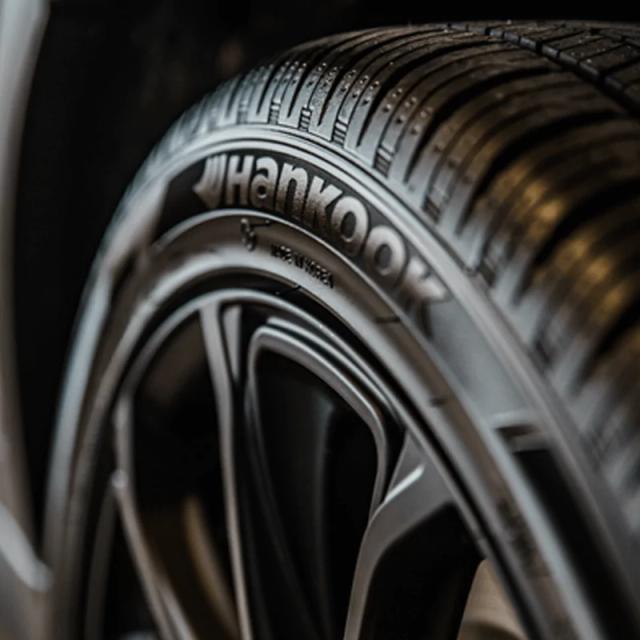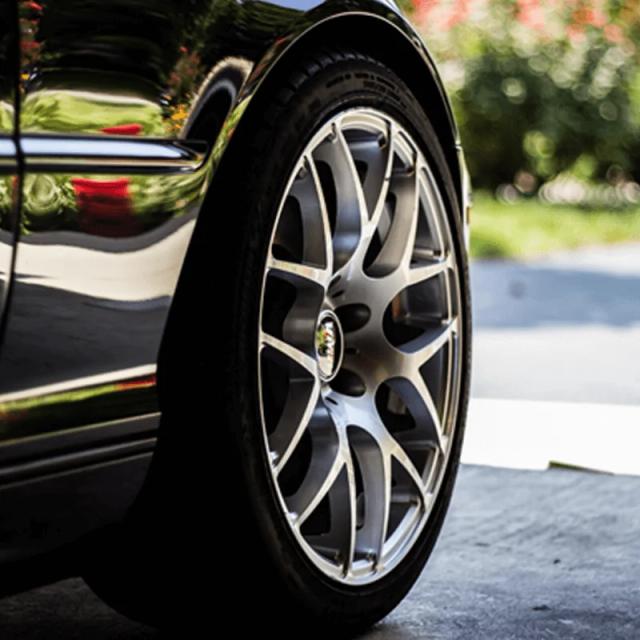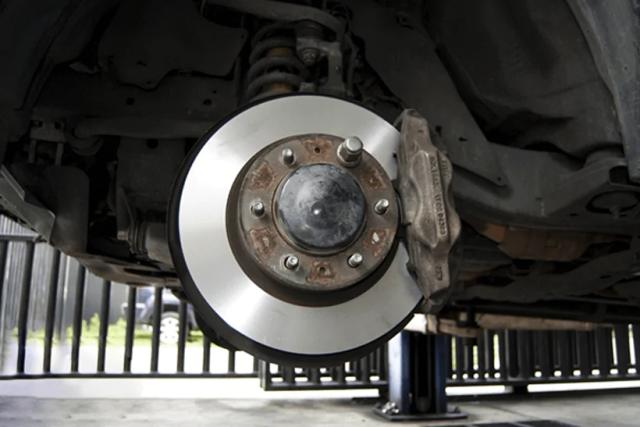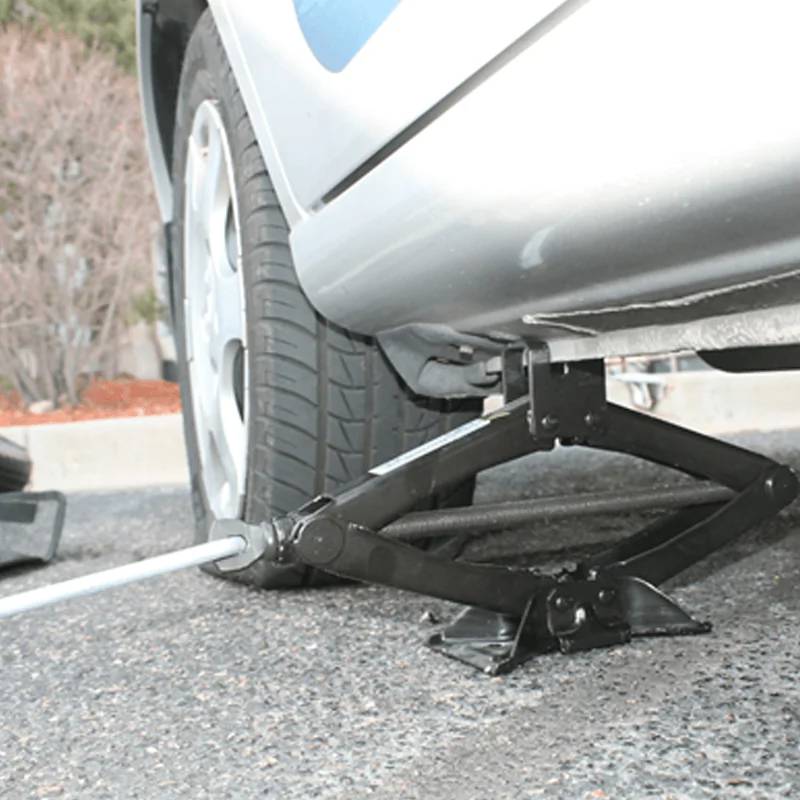
Has your car fallen victim to a pothole or a rusty nail? While the last thing any motorist wants is a puncture or flat, there’s no need to panic: changing a tyre is actually quite straightforward as long as you have all the right equipment handy.
The first indication of a problem with your tyre will often be a sudden thump or jolt, perhaps followed by an unusual banging, grinding or flapping sound. When you’re driving on a flat, the car will also start to list to one side, and it will be take a lot of effort just to keep the steering wheel straight. If you’re unlucky enough for this to happen to you, then it’s time to fit the spare. In this guide, we’ll show you to how to change a tyre, taking you through the process one step at a time.
Pull over somewhere safe
If you think your tyre may be flat or damaged, the first thing you need to do is pull over and carry out a visual inspection. As soon as you suspect that there may be a problem, turn on your hazard lights and slow your car down to around 5mph. Pull over and park as soon as it’s safe to do so.
Ideally, you should park away from heavy traffic, where your car can easily be seen by approaching vehicles — not on a blind bend. If you’re on a motorway, never attempt to change the tyre on the hard shoulder, as it’s too dangerous. Instead, try to get off the motorway to a quieter road: if this is not possible, call your roadside assistance provider.
Check your tyre
Once you’re in a safe place, get out and inspect your tyre. If it’s clearly damaged or punctured, then it’s time to call roadside assistance or change the tyre yourself — see step 3 for more information.
If you can’t see any visible damage, then you should check your tyre pressure, as air may be leaking through a very small crack or puncture. If you find that the pressure has dropped below the level recommended by the manufacturer, then you should call roadside assistance or fit the spare — see step 3 for more information. If the pressure is ok and there are no signs of damage, you can continue your journey, but watch out for signs that the tyre may be deflating, and consider getting your car checked out by professional.
Know when to call roadside assistance
Even if you think you know what you’re doing, there are some circumstances when you shouldn’t attempt to change a tyre by yourself, and should instead call for roadside assistance:
If you break down on the motorway: You should never try to change your tyre on the hard shoulder, as the fast-moving traffic is simply too dangerous.
If your car is showing other warning signs: Sometimes, flat or burst tyres can be a symptom of a more serious problem with your car’s wheel struts or engine. If your car was showing signs of another problem, such as shaking, smoking, or making unusual noises, then don’t change the tyre yourself.
If your car is on soft, sloping or uneven ground: You also shouldn’t attempt to change a tyre on soft, sloping, or uneven ground, as the jack won’t work correctly.
If you don't have the right tools: As with any repair job, you won’t get very far without the right tools. So, if you’ve been caught out without this equipment in your vehicle, then it’s time to call for roadside assistance:
Screwdriver: You’ll need this to remove the hubcap.
Jack: Some cars will come with an emergency jack, while others will not. Check your manual if you aren’t sure. If not, you’ll need to invest in a scissor jack.
Wheel chocks: You’ll need at least two wheel chocks. These are placed behind the tyre to stop the car rolling back.
Locking wheel nuts key: You’ll only be able to remove locking wheel nuts using the special key that comes with your vehicle.
Wheel wrench: Sometimes called a lug wrench, this is used to loosen and tighten the wheel nuts.
Spare tyre: The spare is usually located under the floor panel in the boot. To cut production costs and save space, many manufacturers no longer include a spare tyre, so never just assume that you have one — double check! Your spare needs to be undamaged and in good condition.
Lubricant: A multipurpose lubricant will help with any stiff wheel nuts.
The following items aren’t essential, but you may find them helpful:
Gloves: It’s likely that your tyre will be quite grubby, so you’ll want to wear gloves to protect your hands.
Reflective warning triangle: This alerts other road users to your vehicle while you change the tyre.
Hi-vis jacket:This will make sure you’re visible at the roadside.
Before calling for roadside assistance, you need to make sure that you and any passengers are in a safe place. If you’re on a busy motorway and need to pull over on the hard shoulder, put your hazard lights on and park as far on the left as you can, and turn your wheels to the left. Don’t get out of the driver’s side: instead, climb through and get out of the passenger door, away from fast moving traffic. Make sure that any passengers in your car do the same, and then get everyone away from the road, preferably over the safety barrier and as far up the grass verge as possible.
If you don't already have breakdown cover in place, you can call one of these roadside assistance companies:
RAC: 0333 2000 999
The AA: 0800 887 766
Green Flag: 0800 400 600
Prepare the car
If it is safe to change your tyre yourself, the first thing you should do is put the handbrake on and put the car into first gear, or into park if it’s an automatic. Position the chocks behind the wheels to stop the car from rolling, and then place the reflective triangle about 20 metres behind your vehicle, so it’s clearly visible to oncoming traffic.
Put on your gloves and high-vis jacket, and take the jack, spare tyre, and wheel nuts out of the boot.
Remove the hubcaps and loosen the wheel nuts
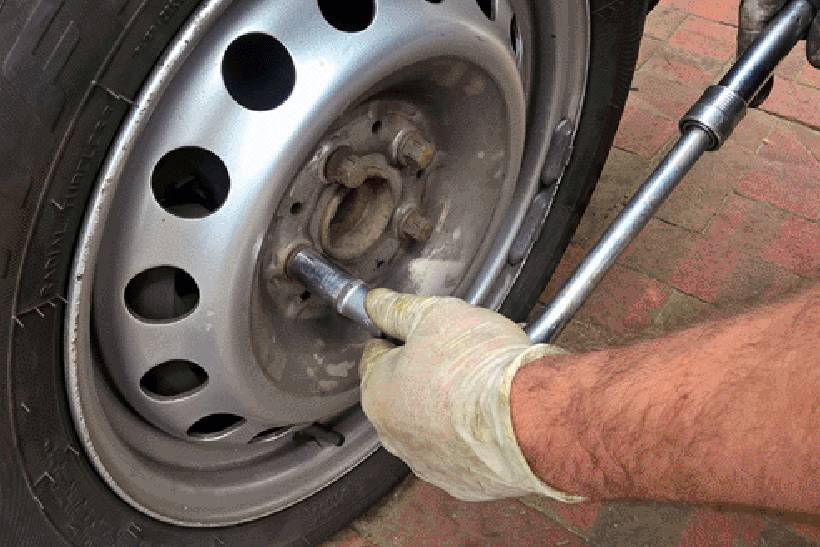
Before you can access the wheel nuts, you’ll need to remove the hubcap. Gently prise it away from the tyre and set it to one side, using the screwdriver if necessary.
Next, loosen the wheel nuts using the wheel wrench — if your car has locking wheel nuts, you’ll need to use the key supplied with your car to take these off. You should always do this before you raise the car using the jack, as this way you’ll be able to apply as much force as you need to loosen the nuts without knocking your car off balance.
Raise the jack
Position the jack directly underneath the jacking point on your car (check the manual for your vehicle if you're unsure), then use it to raise the vehicle up slowly. You want to raise the car high enough so that you can easily lift off the tyre — about 2–6 inches should do the trick.
Remove the tyre
Loosen the wheel nuts and take them off completely. Remember to place them somewhere safe, in case they roll away. Next, take off the wheel, pulling it towards you as you slowly with both hands. Be careful as you do this, as tyres can be surprisingly heavy! Once removed, put the tyre to one side, laying it flat.
Fit the spare and lower the jack
Place the spare tyre on to the hub and secure it into place. It's best to start with the top wheel nut first and work in a diagonal pattern, as this will ensure the wheel is pulled onto the hub mating surface evenly. Secure the nuts with your fingers to begin with and don't tighten them too much, as it will be easier to tighten using the wheel wrench when the car is back on the ground. Working carefully and slowly, lower the car all the way to the ground, then remove the jack.
Tighten the wheel nuts
Using the wheel wrench and working in a diagonal sequence, tighten the nuts as much as you possibly can – you can stand on the end of the wrench if it makes it easier. If the hubcap is compatible with your spare, fit it in to place.
Pack up your equipment and damaged tyre
Your spare tyre should now be securely fixed into place, and you’re almost ready to get back on the road. Pack up all of your equipment, remembering to put the flat tyre in your boot. Be careful to check you’ve got all your locking wheel nuts, and don’t forget about the reflective triangle to the rear of the vehicle.
Get a new tyre fitted
Once the spare tyre is fitted, your car should be back up and running. But the job isn’t quite finished yet: a spare tyre is intended to be a temporary fix to get you moving again, so you should take your car to a garage and get a new tyre fitted as soon as possible.
It’s recommended that you only drive on your spare tyre for around 50–70 miles, which should be enough mileage to get you safely to a garage or tyre fitters. Many manufacturers will also specify a speed limit of around 50mph, meaning you’ll need to drive more slowly than usual. If you don’t think you can make it to the garage, you can always call out a mobile tyre fitter.
No one wants to be stuck at the roadside because of a puncture, but now you know how to change a tyre, you should be able to get your car back on the road in no time. Remember, always keep the equipment we’ve listed here in your car, and you should be prepared for the worst should you ever fall foul of a puncture or flat again.

